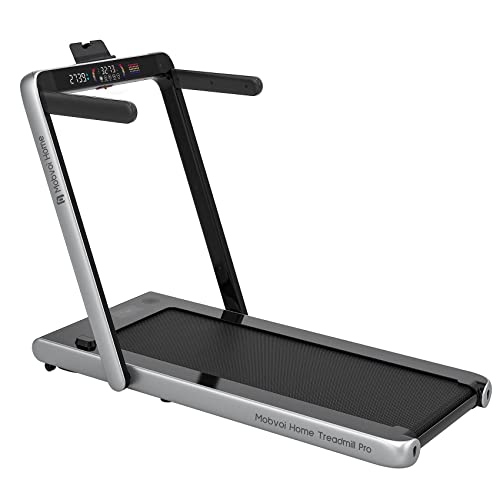The Leading Reasons Why People Perform Well In The Non Electric Walking Pad Industry
Non-Electric Walking Pads: The Future of At-Home Fitness
In the age of digitalization and automation, it may seem counterproductive to revert to a more traditional and mechanical approach to physical fitness. Nevertheless, non-electric walking pads have emerged as an increasing popular option for individuals seeking a sustainable, simple choice for keeping their physical health without depending on technology. In this post, we will check out the advantages, functions, and considerations surrounding non-electric walking pads, eventually making the case for their place in modern fitness regimes.
What is a Non-Electric Walking Pad?
A non-electric walking pad is a by hand operated treadmill that requires no power source besides the force generated by the user's movement. These devices are developed to accommodate walking and running, making them suitable for both light workouts and more intense workouts— while removing the necessity for electricity.
Key Features of Non-Electric Walking Pads
Feature
Description
Manual Operation
Moves with the user's weight and movement.
Foldable Design
Easy to save and transfer.
Adjustable Incline
Permits users to customize the workout intensity.
Space-Efficient
Perfect for small home.
Resilience
Built with robust materials for longevity.
Budget friendly
Lower preliminary financial investment than electric designs.
Advantages of Non-Electric Walking Pads
Non-electric walking pads featured an array of benefits that make them a preferable alternative for lots of fitness lovers. Here are a few of the primary benefits:
1. Eco-Friendly
Among the most compelling reasons to select a non-electric walking pad is that it needs no electricity. In a period where ecological impact is a significant issue, using less energy adds to sustainability.
2. Affordable
Non-electric walking pads are usually more economical to make and purchase than their electric equivalents. They likewise remove ongoing electricity costs. For visit the website trying to find a cost effective way to remain fit at home, this is a substantial advantage.
3. Improved Stability and Safety
Because non-electric walking pads normally have a lower speed, users have greater control over their speed. This makes them safer for those who may fight with balance or coordination, such as the elderly.
4. Low Maintenance
Manual walking pads require minimal maintenance compared to electric designs, which may need regular maintenance and periodic part replacements. This reliability can be a plus for hectic individuals.
5. Versatile Workouts
Many models offer adjustable slopes that allow users to enhance their workouts. This function means that anybody can tailor their exercise routine to meet their specific goals, whether it's weight reduction or endurance training.
Aspects to Consider Before Purchasing
Aspect
Description
Size
Guarantee it fits your designated exercise space.
Weight Capacity
Examine the optimum user weight to ensure sturdiness.
Incline Levels
Identify the variety of incline levels suitable for your physical fitness objectives.
Mobility
Examine how easy it is to move and keep.
Develop Quality
Choose resilient materials to make sure longevity.
1. Size Matters
Before purchasing, think about where the walking pad will be utilized. Guarantee it fits easily in your desired space, enabling adequate space for safe motion.
2. Know Your Weight Capacity
Most walking pads included a particular weight limit. Ensure to confirm that it can securely support your weight for extended usage.
3. Consider Incline Levels
If you plan part of your fitness routine around incline training, explore models that use numerous incline levels for varied intensity.
4. Evaluate Portability
If you have actually limited area, search for foldable models that can be easily saved away when not in use.
5. Focus on Build Quality
A sound walking pad will extend the life of your equipment. Select designs with favorable user reviews about resilience and quality.
Regularly Asked Questions
1. Are non-electric walking pads easy to utilize?
Yes, they are straightforward to run— you just step onto the pad and begin walking! The movement of walking generates the movement.
2. What is the weight limitation for non-electric walking pads?
Weight limitations differ by design, generally varying from 200 to 350 pounds. Constantly inspect the specifications before acquiring.
3. Is it suitable for individuals of all ages?
Normally, yes— it is more secure for older grownups due to its lower speed. However, similar to any exercise program, people must consult a physician before starting.
4. How does a non-electric walking pad compare to a traditional treadmill?
Although both serve comparable functions, non-electric walking pads are cheaper, quieter, and energy-efficient. Conventional treadmills use advanced functions like digital displays and preset exercise programs however come with greater expenses and maintenance.
5. Can you run on a non-electric walking pad?
Yes, lots of models permit light jogging as well as walking. Nevertheless, the experience may differ from electric treadmills, as users have to produce their movement.
Non-electric walking pads represent a useful, sustainable, and affordable solution for those intending to remain active while reducing their environmental footprint. With the capability to deliver efficient exercises with low upkeep expenses, these walking pads might simply be the ideal fit for people and households looking for a no-fuss technique to physical fitness.
As the market for health and wellness continues to progress, non-electric walking pads are a tip that easy options can often provide a few of the best outcomes. Whether you are a novice, a skilled physical fitness enthusiast, or someone looking to introduce regular motion into your way of life, investing in a non-electric walking pad can be a wise and useful option.
